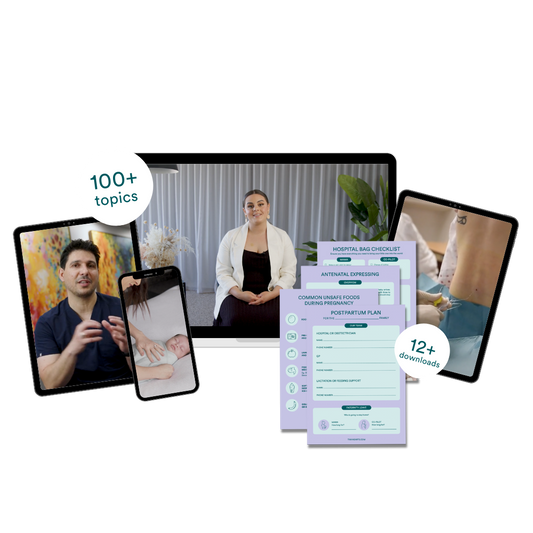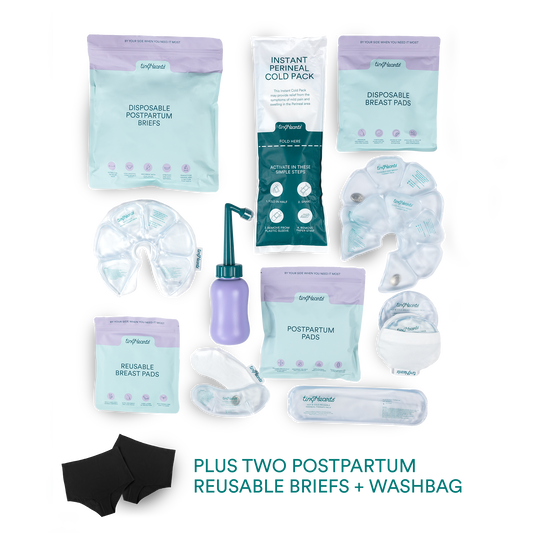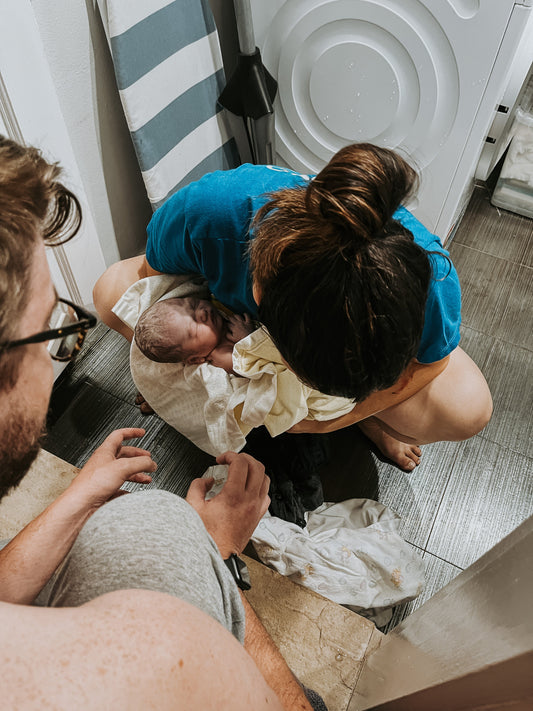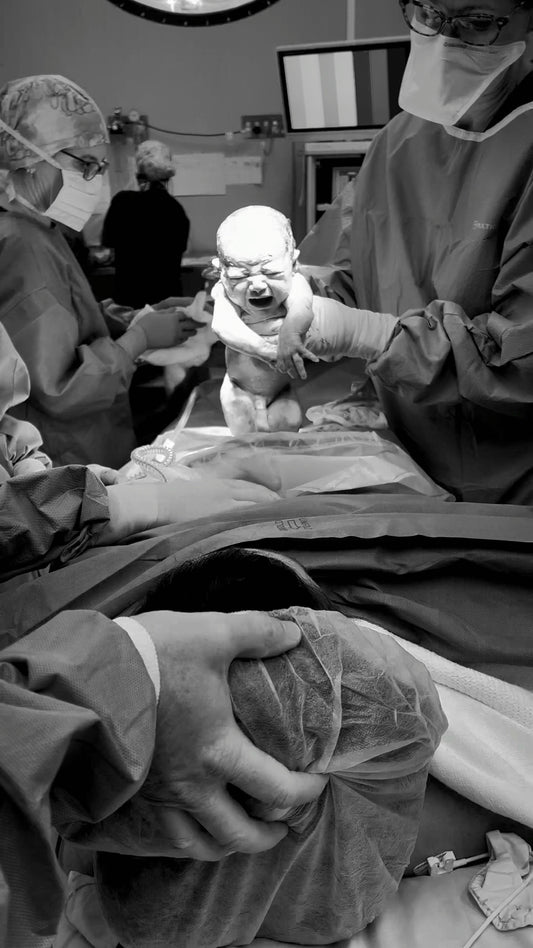Pregnancy during a pandemic was not something I’d have planned. But then, I’ve discovered planning is not nearly as useful as being flexible and adaptable to change.
This was my fifth pregnancy. I have an amazing four-year-old daughter, naturally conceived, uncomplicated pregnancy and vaginally delivered. I have spent the last three years attempting to bring a sibling into the world for her. Three miscarriages, extensive testing, specialist consultations, hysteroscopy and an infusion of lipiodol and I was pregnant, again, and terrified. No one could say why my last three pregnancies hadn’t progressed, and there was no certainty that this one would be any different.
At my first ultrasound, I met my new OB. On exploring my history and assessing all of my test results, he explained that the best thing we could do at this point was regular scans. I’d see him weekly to ensure everything was on track. He understood how anxious I was and that the scans were necessary also to put my mind at ease.
Fortunately, as the pregnancy progressed, and my baby grew, my little boy kicked and thumped away inside. They were continually reassuring me that he was alive and strong. I began to believe that we’d eventually meet.
I had hoped that this labour would begin without intervention, but by thirty-nine weeks with few contractions, mucus plug still intact, it seemed that he was very comfortable on the inside. My OB scheduled an induction.
The journey to this point, the self-isolating from family and friends and the removal of my daughter from kinder all in the hopes of remaining healthy and keeping ourselves and our baby safe meant that I was well and truly ready to get this show on the road and finally meet my baby.
On the morning of the induction, my husband, Ryan, and I walked around our neighbourhood in a bid to ease my nerves. I still couldn’t quite envision everything working out for me this time. I had been on edge so long that I still didn’t want to hope too much.
At the Epworth Hospital, we were shown to our labour suite. I was hooked up to a foetal heart monitor that would monitor my baby’s heart throughout the labour as well as my contractions.

My OB arrived and examined me. This being my second delivery, I was already three centimetres dilated. He broke my waters and inserted the cannula into my arm to administer the syntocinon. We had discussed starting the dosage off low at first and then increasing the dosage as needed.
Ryan helped me set up the TENS machine that I’d hired. I remember the device offering relief, or at least a distraction, from the pain during the delivery of my daughter. We also set up a speaker and my phone to play music throughout the labour.
I had two wonderful midwives. One fully qualified and the other in training. They set me up with a gym ball so that I could roll my pelvis and work my way through the contractions. They were encouraging and supportive throughout the day.
At first, things moved slowly. I was able to converse with the midwives and Ryan. The heart monitor was restrictive. I knew I’d be tethered to the machine and unable to move far but the midwives had to continually adjust the Doppler to get a reading on the baby. They were often holding it in place throughout contractions.

The dosage of the Syntocinon was increased, and the contractions started to increase in intensity and duration. I used the TENS as each contraction built, but I found that this time it offered little relief.
I rolled on the gym ball and tried standing and leaning against the bed. This was not the sensation of labour that I remembered. The pressure all seemed to be situated in my lower back.
Between contractions, the midwives asked me if I was feeling the urge to push. The reality was that I wasn’t ready to push. I couldn’t really describe to them what I was feeling just that my contractions seemed to be pushing against my lower spine.
I began to feel hot. Heat was rising up through my body and with it waves of nausea. I said that I thought I might be sick and was quickly handed a vomit bag. I hadn’t eaten a lot that day which was fortunate as I brought everything up. Instantly, the waves of heat ceased, and I felt better for being sick.
Rather than feeling in control, I was aware that there was little I could do but react to what was happening in my body. I tried to breathe through the contractions. I gave up attempting to use the TENS machine as it just seemed to increase the pressure in my lower back. I was vaguely aware of a midwife continually holding the monitor for the foetal heart rate against my belly.
I asked to try the gas and was instructed on how to properly breathe through the mouthpiece. Again, the question about whether I felt the urge to push. I know my answer was probably not very helpful, but I thought, ‘no, I don’t feel like pushing, I just feel back pain and pressure.’
The midwives suggested that I might find being on my knees upon the bed more comfortable. Leaning against the upright bedhead, I felt like I had some support and could ride out the waves of contractions.
My OB was called in to examine me. Lying on my back to be examined was excruciating. My OB said, ‘the girls have called it. Your baby is around the wrong way, and his spine is aligned with yours. I’ll have to turn him when you’re fully dilated.’
It explained all the pain in my back and why the midwives were having so much trouble keeping the foetal heart monitor in a good position. Frustrating, as it was to know that the baby wasn’t making this an easy entry into the world, it was reassuring to know that my instincts had been right. The labour pains were not how I thought they should be.
I was seven centimetres dilated, and the contractions felt as though they were toppling over each other. Allowing me just enough time between them to regain my breath and recover. My OB said, ‘that was a good position to be in because of the way the baby’s facing.’ I was helped around on my knees again.
One of the midwives asked if I wanted anything else for the pain, ‘you could try morphine.’
My OB knew that I hadn’t wanted drugs. He said, ‘you’re doing it. You don’t need them. You’ve reduced your cervix length and got to seven centimetres in an hour and a half.’
‘I think I want to try the drugs,’ I said.
‘Okay, done.’
I asked if the morphine would be administered through the drip. ‘No, a needle in your bum,’ replied the midwife.
It’s difficult to know if the morphine took the edge off. I still sucked down the gas and the time for recovery during each contraction reduced so much that I couldn’t really speak between them.
I reached a point where I thought I couldn’t carry on much longer. I started to think that I might need to ask for more help, and then I felt that I needed to push.
Ryan had been by my side throughout. Offering to rub my shoulders or lower back but I was mostly unreachable. In a place all of my own I’d occasionally grasp his hand for support.
There were moments when I was aware of the music playing in the background. Lana Del Rey’s, ‘Video Games’ lyrics stuck in my mind. ‘It’s you, it’s you, it’s all for you. Everything I do.’ I focused on this line and let it circle through my brain like a mantra. I tried visualising my baby in my arms.
The midwives called back my OB. I turned on the bed to see him dancing to something that was playing. Despite everything going on, I couldn’t help but smile. Everyone around me did this every day. They were relaxed and professional, and they put me at ease.
I was now ten centimetres dilated. I was told to set aside the gas. My OB used one of my contractions to turn the baby. It felt as though my body was forcing everything down and that the baby was being forced back against me.
The midwives instructed me to use my hands to grasp beneath my knees and to bolster myself against the bed. They watched my contractions on the monitor and instructed me to begin pushing as the contractions began to build.
I looked down, and the room seemed full. A team of people helping me get through this. My OB, the two midwives, a third midwife I’d never noticed before, all instructing me to push, all guiding my baby into the world.
Ryan was by my shoulder, encouraging me. I was pushing, but it didn’t quite feel right. I felt stretching and an excruciating stinging sensation, which I could not breathe through or push through. I used this contraction to simply groan and call out in pain. My OB instructed me to use it, push through it, rather than make the noise.
On the next contraction, I pushed as instructed, and this time it felt different. It felt like I was pushing to poo and everyone in the room began saying, ‘that’s it.’ Now, I understood how I needed to push and what it should feel like. I listened as I was told to push leading up to the contraction and perhaps longer than I might have pushed otherwise.
Suddenly, everyone was saying, ‘look down.’ I knew that my baby’s head must be out. I tried to push against the bedhead to lift myself high enough to see past my belly, but I couldn’t see him. I tried to speak to say that I couldn’t see, but the next contraction was upon me, and I had to go with it. Glancing at Ryan, he had begun crying, so happy to see that our baby was on its way.
My OB instructed my pushing now, ‘small push. Big push. Small push.’ Though I couldn’t see I imagined he was guiding the baby’s shoulders out. In an instant, I was being handed my baby.
‘Just hold him. The cords not long enough. Sit the bed up higher.’ My OB instructed. In outstretched hands, I held my baby.
The midwives moved the bed up higher and removed my t-shirt and bra. Ryan was quickly instructed to cut the cord. I now held my baby to my chest for the first time.


He hardly cried. Whimpered a little and then just sat calmly against me. Ryan and I whispered to him and explained that we were his parents. So caught up in our baby I was barely aware of the room. I knew my OB was still busy. I felt sharp pains.
‘Just look at your baby,’ my OB instructed. Another pain. I looked at the midwife by my side. They put my legs in the stirrups, and my OB gave me a local and began to stitch up the tear.
My OB left the room, while the midwives and my husband took the baby to be weighed and measured and dressed. My OB returned, ‘unfortunately the placenta is stuck. I’m going to have to manually remove it. I’m sorry you’ve done all that work, and now you’ll have to have an epidural. The anaesthetist is ten minutes away.’
One of the midwives collected colostrum for the baby in case I had to go to the theatre. The idea of a needle going into my back and losing control over my lower body has always frightened me. I didn’t have a lot of time to consider what was going on.
The anaesthetist laughed at the music as he entered the room. Lilly Alan’s ‘Fuck you’ was playing, ‘I know you don’t want to see me.’ He explained the risks and the needle was administered. I was in shock at how quickly it worked and how bizarre it felt to no longer be able to move my lower body.
My OB explained what he was doing. He set up a catheter that would stay in for the rest of the evening. He then removed the placenta, this I was thankfully not terribly present for. I kept feeling as though I wanted to drift to sleep and really had to concentrate to focus on what was going on around me. The placenta came out in one complete piece and my OB then re-sutured as some of the stitches had come undone during the procedure.
Ryan, little Oliver, and I were alone for a while. Tired, overawed by the experience, but so thankful to have our baby safely delivered into the world. The birth summary states that from the time my waters were broken to the end of labour was four hours and forty minutes.
In some ways, it seems like such a short time frame for so much to have taken place. The world, the pandemic, the fact that we could not have our daughter and family visit seem like concerns of another time and place. Our little boy was in my arms, and I was so thankful.









